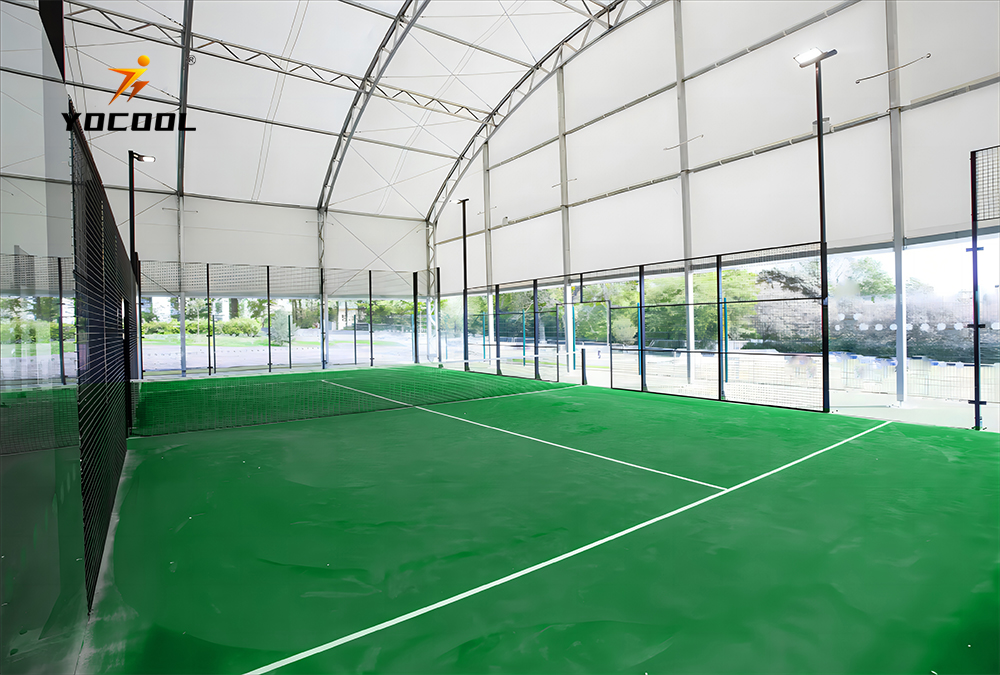

Exploring the World of Racquetball Racket Factories
Racquetball, a fast-paced indoor sport that combines elements of squash and handball, has gained a dedicated following since its invention in the 1950s. As the popularity of the game continues to rise, so does the importance of high-quality racquetball rackets, which play a crucial role in a player’s performance. The racquetball racket factory, where these intricate pieces of sporting equipment are crafted, is a fascinating hub of innovation and craftsmanship. This article delves into the intricate process of racket manufacturing, the materials used, and the technology that enables athletes to elevate their game.
At the heart of any racquetball racket factory lies a commitment to quality and precision. The journey of a racquet begins long before it reaches the hands of players. Factories often employ skilled artisans and technicians who combine traditional craftsmanship with modern technology. The manufacturing process starts with the selection of materials. Most racquets are made from composite materials, including graphite, fiberglass, and sometimes even aluminum. These materials are chosen for their lightweight properties and durability, ensuring that players can maneuver their racks with ease while also maintaining control during intense matches.
Once the materials are sourced, the manufacturing process can be divided into several stages, beginning with the creation of the frame. Racket frames are typically constructed using a process called molding, where materials are shaped into precise designs that enhance performance. The frame's shape and string pattern can greatly influence its aerodynamics and power, factors that players take into consideration when selecting their equipment. The factory technicians carefully follow design specifications to ensure consistency and quality in each batch of rackets produced.
Following frame production, the next step involves adding the strings. Stringing a racquet is an art form in itself and can make a significant difference in a player's game. Racquetball rackets are often strung with synthetic gut or multifilament strings, which provide a good balance of power and control. The tension of the strings is crucial; higher tension offers more control, while lower tension can provide more power. Racquetball racket factories often have advanced stringing machines that ensure precise tension and alignment, resulting in optimal performance characteristics.

Another pivotal aspect of the production process is the quality control stage. After assembly, each racket undergoes rigorous testing to ensure that it meets industry standards and performance metrics. Technicians inspect the frames for any imperfections and test the string tension, ensuring that the final product is reliable and durable. This commitment to quality ensures that athletes can perform at their best without worrying about equipment failure during competition.
In addition to traditional manufacturing techniques, racquetball racket factories have embraced technological advancements, such as computer-aided design (CAD) and 3D printing. CAD allows engineers to simulate the performance of a racket before it is manufactured, leading to more effective designs that cater to the needs of players. 3D printing, on the other hand, has the potential to revolutionize the production of rackets by allowing for rapid prototyping and customized designs that can meet the unique specifications of individual athletes.
The impact of racquetball racket factories extends beyond just production; they play an essential role in the broader sports community by providing players with the tools they need to succeed. Many factories also engage in research and development, working closely with professional players to gather feedback on racket performance, which can lead to innovations that benefit the entire sport.
In conclusion, racquetball racket factories are integral to the sport's ecosystem, where tradition meets technology to produce equipment that drives performance. As the sport continues to evolve, so will the techniques and materials used in manufacturing racquets. For players, understanding the intricacies of their equipment can offer insights into their performance and help them make informed decisions when selecting their gear. In a game where every point can make a difference, having the right racket can be the key to achieving success on the court.
Premium Rubber Composite Flooring Durable & Eco-Friendly
Premium Rubber Composite Floor Durable & Slip-Resistant
Durable Industrial Flooring Solutions for Factories Expert Installation
Premium Rubber Floor Mats Durable & Slip-Resistant Protection
Rubber Brick Non-Slip & Eco-Friendly Flooring Solutions
Premium Rubber Floor Mats Durable & Non-Slip Protection